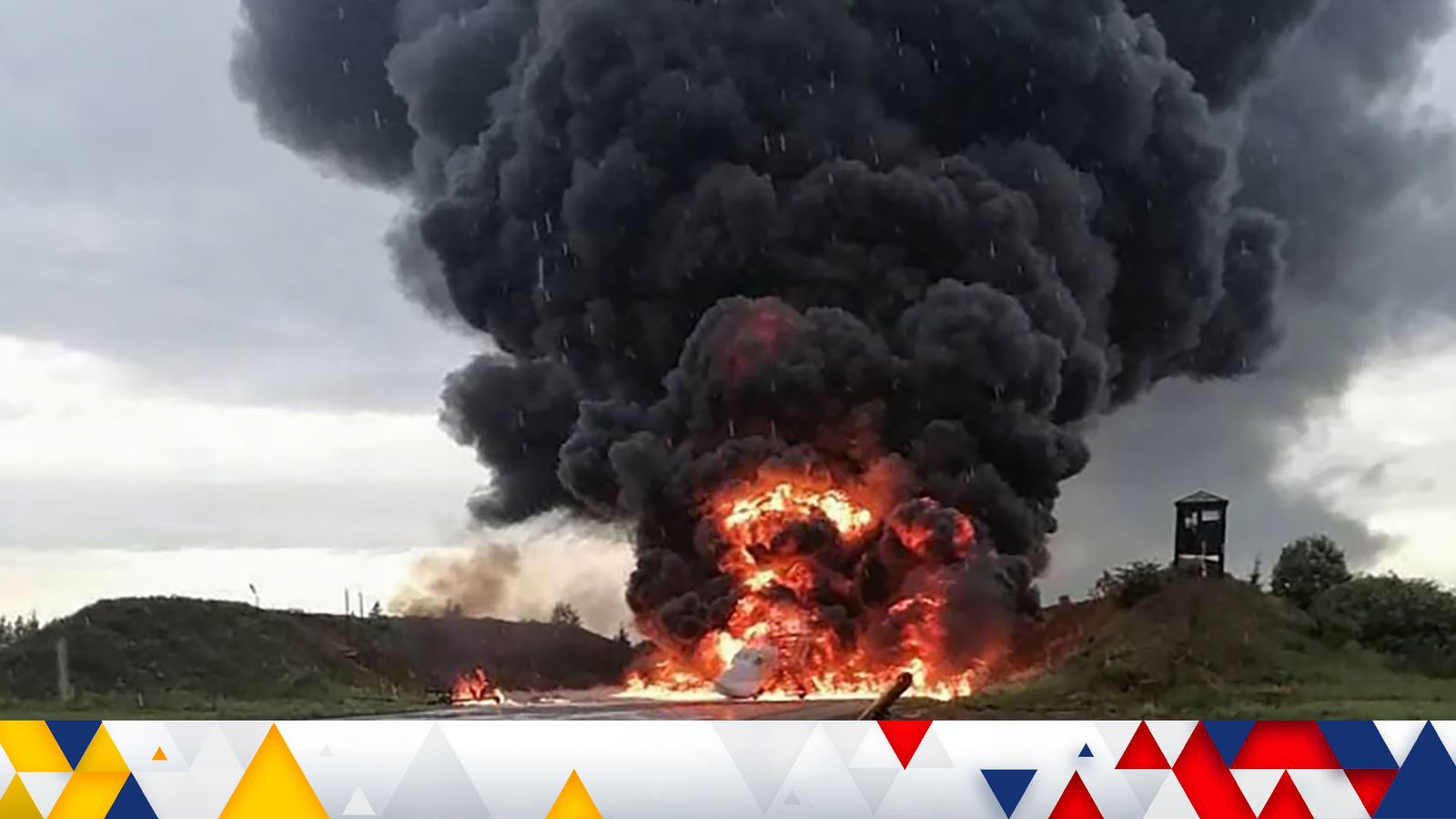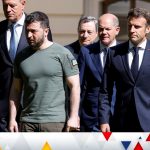Although Ukraine has proven an incredibly resilient adversary, it remains a “David” to Russia’s “Goliath”.
Ukraine cannot afford to get trapped into a war of attrition which would favour the significantly larger Russian forces.
Ukraine has to avoid conventional force-on-force unless absolutely required, and must seek ways to exploit asymmetric advantage.
‘Biggest drone attack’ in Russia since conflict began – Ukraine war latest
In terms of conventional military capability, President Volodymyr Zelenskyy‘s forces started the conflict with very limited supplies of former Soviet Union equipment, all of which was older and less capable than its Russian adversary.
Western military aid has included high-tech precision weapons, but supplies are limited and Ukraine has been forced to innovate.
Drones have enabled Ukraine to conduct long-range targeting of Russian logistics resupply lines, as well as providing eyes and ears over the battlefield.
They tend to be cheap, are readily available, and can be swiftly adapted in response to changing battlefield conditions.
However, drones are also vulnerable – they lack any sophisticated self-defence capability, and they are slow and thus relatively easy to shoot down.
But, if launched in large quantities, some tend to get through – quantity has a quality all of its own.
Please use Chrome browser for a more accessible video player
The significant benefit of drones is the ability to innovate.
Innovation is not a term synonymous with the Russian military, but Ukrainian specialists routinely reprogramme and modify battlefield drones overnight to overcome legacy Russian military capabilities.
This is a significant asymmetric advantage for Ukraine over Russia.
Read more:
Drone attacks show life is more dangerous for Russians
Putin was careful not to make Prigozhin a martyr
Six drone attacks hit Moscow in record-size attack
So where does Ukraine source its drones?
Ukraine has some old Soviet long-range drones, but these are very slow, vulnerable and in limited supply. Ukraine has also modified some of its larger surface-to-air missiles to attack fixed targets.
Where Ukraine has been very successful is securing crowdfunding to procure commercially-available drones, which they can subsequently adapt to meet their immediate needs.
Drones have enabled Ukraine to take the initiative over Russia in three key areas:
• Russia’s complacency – despite being at war with Ukraine, Russia’s military bases have yet to be placed on a war footing, with strategic military aircraft routinely unprotected and thus vulnerable to drone attacks. The loss of four IL-76 Russian military transport aircraft in a drone attack on Pskov illustrates this strategic vulnerability.
• Psychological – Ukrainian drone attacks against Moscow have had very limited tactical impact, but their psychological impact on the Muscovite civilian population has been huge. President Vladimir Putin justified launching the war against Ukraine by claiming it would make Russians safer – these drone attacks demonstrate that Russians are more vulnerable.
• Smaller drones have provided invaluable real-time intelligence – Ukrainian eyes and ears over the battlefield which have enabled Ukraine to strike Russian frontline forces with unparalleled accuracy and effectiveness.
As to how these drones are able to travel so far into Moscow, one can only speculate.
Either the Ukrainians are able to extend the range of their drones by a significant margin, or the attacks are being launched from within Russian territory.
Drones will continue to play a strategically significant role in this conflict, and have revolutionised the way that a smaller, less well-equipped military force can prevail against a larger adversary.
And the widespread exploitation of drone technology in the Ukraine war will have a profound effect on international military planning for years to come.






















